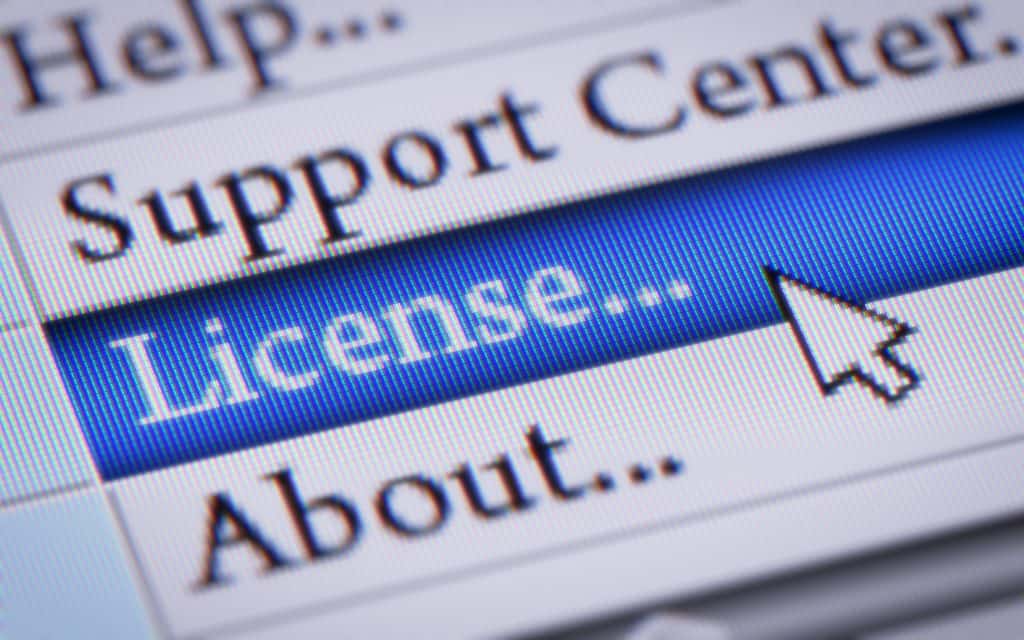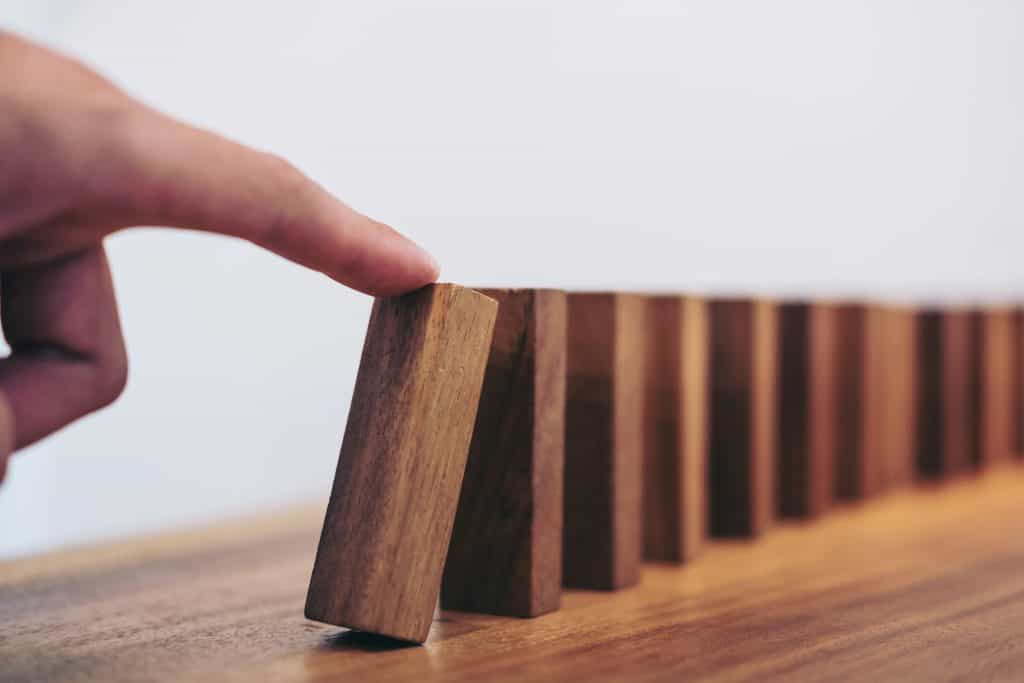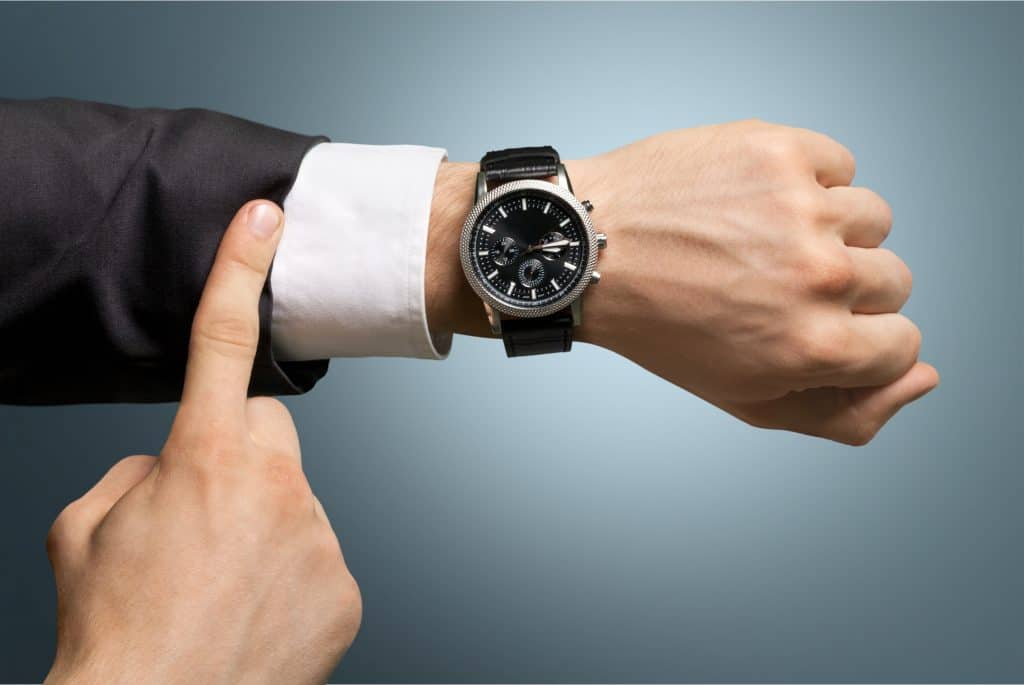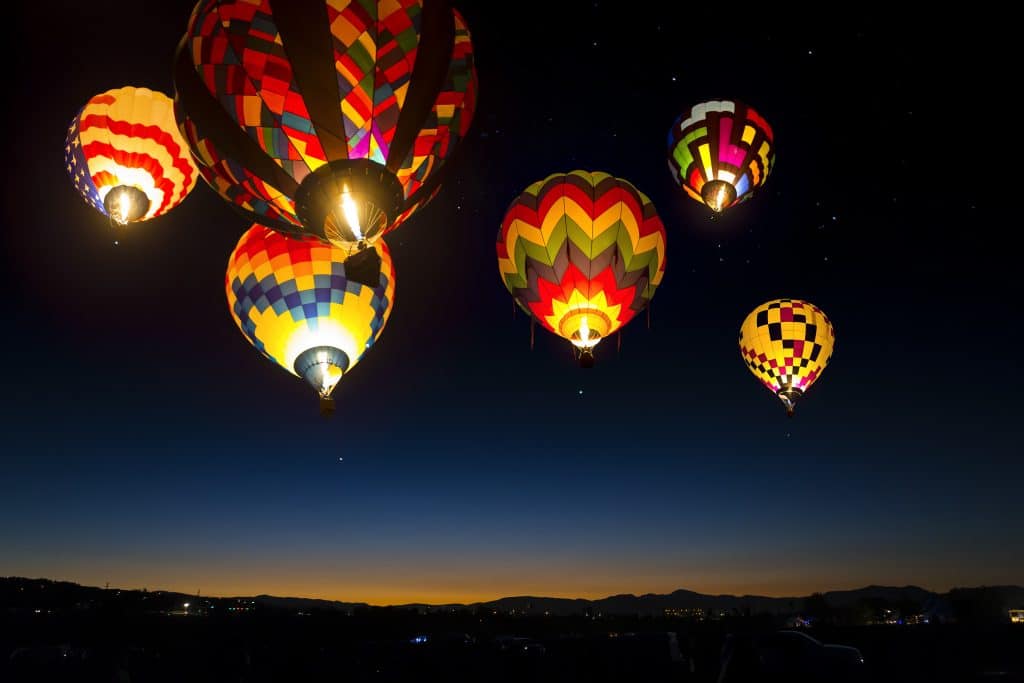
For as long as humans have walked the earth, we have dreamed of flying. One of the most exciting ways to achieve that dream is to become a hot air balloon pilot!
To get a private pilot license for hot air ballooning, you need to be at least 16, have 10 hours of balloon flight experience, 6 assisted flights, one solo flight, one controlled ascent above 2,000 feet from the takeoff point, 2 flights lasting over an hour within 60 days of certification, a written test, and pass a practical skills test. The FAA also offers student and commercial pilot licenses.
Becoming a hot air balloon pilot requires a significant commitment of time, money, and effort. However, we’ll discuss below how this dream can become a reality for you!
Student, Private, and Commercial Licenses

There are three different kinds of hot air balloon licenses offered by the FAA. Each one has different requirements and allows you to do different things with a hot air balloon.
These licenses can be viewed as being progressive. Each one is more difficult to get than the one before it, and each one allows you to do more than the one before it.
The licenses (in order) are a student license, private license, and commercial license.
Whereas a student license is relatively easy to obtain (almost no training or certification or training is necessary), a private and commercial license requires a significant commitment.
Determining which license is right for you is crucial because it largely determines how much time, money, and effort you will put into this endeavor.
Below we’ll discuss the different requirements and privileges of each license.
Student License
To obtain a student license, there isn’t much you have to do. The requirements include:
- You must be at least 14 years old
- You must speak, write, and understand English
- Indicate that you do not have any medical condition(s) that would disqualify you from flying.
And that’s pretty much it! There’s an application that you need to fill out that is pretty simple. You can read more about it here. Once your application is approved, your student license will be mailed to you!
While you have to indicate that you don’t have a medical condition that would disqualify you from flying, you don’t actually have to include a medical certificate for this license.
A student license is what’s required for you to begin training for a real license. It really doesn’t allow you to do too much. It’s just a necessary step in the process!
The application doesn’t cost anything if you send it directly to the Flight Standards District Office, but you will be charged a processing fee if you send the application in through a 141 flight school or a certified flight instructor.

Private License
Once you have your students license, you’re ready to start working towards a private license. Completing the following requirements while you hold a student license will result in obtaining a private license:
- You must be at least 16 years old
- Complete 10 hours of flight training
- Complete 6 flights under the supervision of a certified flight instructor on a private area of operation
- Take 2 flights lasting at least an hour within 60 days of certification.
- Make a controlled ascent to 2,000 feet above the takeoff point.
- Complete 1 solo flight.
- Pass the FAA Knowledge test (written).
- Pass the Practical Knowledge test (oral and flight).
As you can tell, getting a private license is a grueling process that requires a lot of time and money. It’s not something that you can easily complete in a weekend!
Remember too that these are the basic requirements. Many applicants find that passing the Knowledge and Practical Knowledge tests require a lot more practice than just 10 hours of flying.
Once you have your private license, you can pilot a hot air balloon by yourself or with passengers! You cannot charge for your services and you cannot fly in any commercial capacity (including advertising).
This is the perfect license for someone who balloons as a hobby!
Commercial License
But what if you wanted to balloon professionally? I mean, hot air ballooning is fun in and of itself, but we all have bills to pay! If this is your situation, a commercial license is the license for you!
The requirements for this license include:
- You must be at least 18 years old.
- Hold a private pilot license.
- Spend 35 hours as a pilot, 20 of which much be as a hot air balloon pilot.
- Take 10 flights in a balloon.
- Complete 2 flights in a balloon as the pilot.
- Make 1 controlled ascent to 3,000 feet above the takeoff point.
- Complete 2 solo flights.
- Take 10 hours of advanced training including 10 training flights.
- Pass an advanced Knowledge test (written).
- Pass an advanced Practical Knowledge test, including information about being a certified balloon instructor (oral and flight).
There’s obviously a lot that goes into getting a commercial license. It’s a serious commitment that comes with serious responsibilities. There’s a reason it’s so rigorous.
First of all, once you have your commercial license, you can fly for hire and participate in commercial flights. Hot air balloon companies can hire you and pay you for your services.
Secondly, you can act as an instructor for other pilots trying to get their license. This is a massive responsibility that must be taken seriously.
Because of the intense time and financial obligations, I only recommend this license to individuals who are serious about making ballooning an integral part of their career and life.
Getting Started

Once you’ve decided which license you want to get, how do you get started? They say getting started is the hardest part. They also say that a journey of a thousand miles begins with one step.
Man, that was such a smart dude.
Of course, getting your student license is the obvious first step. Without that, you can’t do anything else. So get busy filling out that application!
But it may be hard to know beyond that. This is especially true if you aren’t already a part of a ballooning community. Well, it looks like you came to the right place for some help!
Let’s talk about how to really get started.
Make a Plan
First things first, you need a plan. Now, you may be saying to yourself “I’m not a planner, I just go with my gut. Planning is for punks”. If that’s how you feel, you can go ahead and skip this step. But you do so at your own risk.
Making a plan is SO important whenever you’re trying to accomplish a major goal, and this is a major goal.
You’ll want to look at how much time you can allocate to getting a license, how much money you can budget for training and equipment, and then make sure to check your calendar!
A lot of flying is done in the early morning or late at night. You’ll need to be prepared for that. Also, a lot of flight schools will book training flights close to each other so you don’t lose skills over time.
If you can only fly during the weekend, you need to figure out a way to do that consistently so you finish in a timely manner. You also need to schedule a time for studying.
We’ll get more into costs in a little bit, but this is a serious financial commitment. I would budget a solid $5,000 dollars for getting a license.
If you’re working a full-time job while finishing law school, this may not be the best time to work towards getting a license. On the other hand, if you really want it, you’ll have to commit sooner or later.
So, review your resources and make a plan. Make a budget, organize your calendar, and decide if this is the right time for you to work towards getting your license!
Find a Training School
If you decide this is definitely the right time for you to become a pilot, then you need to find someone who can train you. Just like every great hero, you need your mentor.
Luke had Obi-wan. Harry had Dumbledore. Bush had Cheney. Who will you have?
Well, that’s where training schools and other certified flight instructors come in. They are qualified to administer (and record) the training you need to get your license.
If you already know a commercial pilot, you might think about asking them. If they offer that service, I’m sure they’d love to help you as you begin your journey!
Otherwise, you can just Google where the closest flight school or instructor is. I would recommend giving Cameron Balloons a call. They can direct you to one of their representatives anywhere in the United States!
Depending on where you live, it may be a little harder to find a school or instructor. If that’s the case, don’t give up just yet! Hard is not impossible. It may just take some extra searching.
Volunteer as a Crew Member
Other than having an instructor, you can get experience by volunteering as a crew member. This will help you learn your way around a hot air balloon and prepare you for your tests!
I really can’t think of a better way to prepare for being a balloon pilot than being a crew member. It really gives you the hands-on experience you need that can’t be obtained in any other way.
Plus, it will give you a great perspective on hot air ballooning. You might not spend a lot of time flying (or any time for that matter), but you’ll better understand the work that goes into a successful flight!
You’ll get the opportunity to work on the pre and post flight checklists, observe a pilot in action, and build some great relationships! You’ll learn the names of different pieces of equipment and parts of the balloon, plus you’ll learn how they work!
If you love ballooning, this is a great way to get started. You might also find out that being a pilot isn’t for you, and that’s totally fine! Working as a crew member or just being a passenger is great too!
All in all, if you have the opportunity to work as a crew member, I wouldn’t pass it up. It will give you valuable experience in every part of the ballooning process!
How Long Will it Take?

This is an incredibly important question. I could go on forever and ever about how important time management is, but I’ll spare you of that. Instead, we’ll just look at some of the facts!
There are a lot of programs out there that advertise how you can get your pilots license in just one week (insert gasps of amazement for effect).
The reality is that there is no way that’s possible, just from a logistical perspective. In fact, if you read the fine print, these programs have a lot of preparation that you need to do before even showing up.
So really you don’t get your license in just one weekend. You get a lot of flight instruction and access to equipment for one weekend, but then your back on your own.
Looking at the cold, hard facts, this process could take you 6-12 months. In fact, one company says their average student spends 22 hours over 10 months preparing for their tests. That’s a much more realistic expectation.
Below, we’ll look at some of the things that you should consider while you’re planning how long it will take to become a hot air balloon pilot!
Training Hours
There’s a belief out there called the 10,000-hour rule. You may have heard about it, and you may have even tried it! It basically postulates that doing something for 10,000 hours makes you a master at that thing.
Well, in hot air ballooning, there exists a 10-hour rule. In order to get your private license, you have to spend at least 10 hours in the air. That’s a lot more reasonable than 10,000 hours, right?
Well, it turns out that the 10,000 hour rule is quickly falling out of favor with psychologists. It turns out that becoming an expert has more to do with how you practice than how long you practice.
That holds true for hot air ballooning too. While 10 hours is the technical requirement, there’s actually more than that you need to do in order to become ready for a license test.
If anything, you should look at 10 hours as a minimum. Really, you should evaluate how well you’re progressing in your performance.
That can be difficult because how can you record performance in a log book? Well, that part is really up to you and your instructor. At the end of the day, just know that you’ll spend more than 10 hours of training.
Looking at a lot of pilot’s experiences preparing for their tests, I would recommend you should spend 20 hours in the air on average. Don’t be afraid to spend more time than that if you need it!

Weather, Scheduling, and Other Delays
No matter what you believe in, God, science, the universe, you have to admit that life has a sick sense of humor. Just when you think everything is planned and ready to go, the rug gets pulled out from underneath you.
If George Milton were a real person, he could tell you that even the best-laid plans of mice and men often go awry.
Such it is with all of the worthwhile endeavors of life, including getting your hot air balloon pilot license. No matter how well you schedule, the unexpected will eventually get in the way.
The first and most common event that will get in the way? Weather. Weather always gets in the way sooner or later. Whether (ha) it’s rain, wind, or sharknado, get ready to miss a flight because of the weather.
The second unexpected obstacle that you should expect is conflicting scheduling. Either you or your instructor will likely have other things going on some point that will push your training back a little bit.
Then there’s everything else. Sickness, insufficient funds, car break downs, habitual tardiness, holidays, and encounters of the third kind are all things that could delay your training.
So, what do you do about these set backs when they occur?
Be Committed
The answer is to be committed. If you’ve decided that getting your pilots license is something you really want to do, then don’t lose sight of that goal.
Now, I’m no life coach, but I’ve been on this rock long enough to know that you don’t give up on long term goals because of short term difficulties. You’ll never succeed with that mentality.
Know that a lot of people have been there before, and you know where they are now? Flying around with their pilot’s license. You can do this! Let your commitment be paramount.
How Much Will it Cost?

I’m just going to say this right off the bat: it’s expensive to become a pilot. Granted, expensive is a somewhat relative term, getting your license still isn’t like going to the movies.
In fact, it’s not even like going on an airplane ride, buying an Xbox, or eating 83 slices of avocado toast. It’s much more expensive than each of those.
The cost of getting your pilots license is more comparable to buying a used car, taking a cruise to Rome, or purchasing roughly 24 shares of Apple stocks.
To save you the math, that’s about $5,000. Now, there are some situations where it could be cheaper, and some places where it could be more expensive. However, it normally comes to about $5,000.
It’s worth noting that this money is an investment. You’re not just paying $5,000 for a little card, you’re paying for hours and hours of enjoyment and adventure.
There are not a lot of people who can hop in a hot air balloon and fly it! You’ll be in a very unique group of people once you get your license. So it’s not just money down the drain, it’s an investment.
Still, that’s a lot of money. So how on earth could it cost that much to get a pilots license? Isn’t it better to just take the cruise to Rome? Well, let’s look at the answers to those questions!
Paying for Lessons
First things first: the lessons cost money. Normally these lessons are a part of a larger business, so they need to be worthwhile for the company to offer them.
Worthwhile in business speak means profitable. Just FYI.
There are instructors to pay, property leases that probably cost way too much, and growth that needs to be made. All of this means that you, the customer, must pay for the services you receive.
That doesn’t even take into account the cost of equipment, which we’ll cover in a little bit. In fact, the lesson cost by itself is the lesser of the two evils.
Of course, there is a way around this cost. It’s not common, but it’s worth looking in to. If you are friends with a commercial balloon pilot, they could teach you, and they might be nice about the cost.
Again, that is a rare situation, but it’s more likely if you’re already involved in the hot air balloon scene where you live. Something to think about!
When all is said and done, there really isn’t a way around this cost. Even if you can get a discount, you need an instructor and instructors need money. That’s not a bad thing! It’s just something to be aware of and plan for.
In fact, if your instructor doesn’t charge you, I’d be very suspicious. That whole “we need your credit card information but won’t charge you” thing is always a scam. Always.

Paying for Equipment
The major kicker for this section is paying for the equipment. Equipment costs are really expensive. In fact, this is where most of your money is going to end up.
There are basically two routes you could go here. You could buy all your own gear that you’ll have forever. That’s SUPER expensive. Or, you could rent from whoever is training you. That’s a lot cheaper.
When we say that training will cost around $5,000, we assume you’ll be renting equipment. Usually, these rental costs are included in your fees for each lesson you take.
If you’re buying your own equipment, you’re looking at spending tens of thousands of dollars. Just buying the hot air balloon itself will cost you over $15,000.
From there you have to pay to store, transport, and fuel the balloon. Plus there are also maintenance costs and you still have to pay for the lessons. Oof.
There are obvious pros to getting your own equipment. The biggest one is that once you have your license, you can fly whenever you want! Also, you’ll practice with the equipment that you’ll always be using.
When you’re trying to decide which route is best for you, it’s really about your financial standing. If you can afford your own equipment and you’re going to use it, why not buy it? Otherwise, there is nothing wrong with renting!
Miscellaneous Costs
Wondering what miscellaneous costs are? They’re the costs that see how broke you are, and then kick you right in the teeth (financially speaking of course).
For example, you need to budget for travel expenses to and from where you’re training. You might also want to budget for food expenses if you eat breakfast or dinner while you train.
You might also consider clothing costs. Maybe you need a new coat, new shoes, or a new baseball hat. You could also budget for any some first aid supplies (that you probably won’t need).
Also, as you get to know people in the ballooning community, you should budget for social expenses. These costs include any expenses you incur from going out with friends (or lovers) you meet.
Now, you may be wondering whether or not I’m being serious here. Well, to quote my Dad, “I’m as serious as a heart attack”.
I’ve been poor for long enough to know how these miscellaneous costs can add up. Over time they’ll really end up, well, costing you. They’re important to budget for, at least as far as you can predict them.
You Can Do It!

It should be obvious by now that getting your hot air balloon pilot license will be no easy feat. In fact, it is a serious challenge that requires time, money, and effort.
It is easy to get discouraged on this journey. Whether it’s as you take a serious look at your finances or when you make your first mistake in the basket, there will definitely be discouraging times ahead.
We here at Outdoor Troop believe in you! You can do it!
Hot air ballooning in and of itself is proof that things which seem impossible can be achieved there determination and creativity. The spirit of ballooning can live in you.
There will be enough money eventually, you can find the time, you will get better as you practice, and you will get your hot air balloon pilot license!
And you can say to all the naysayers, including the inner voices of doubt, “you have no idea how high I can fly”.
